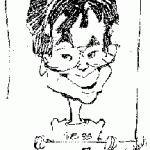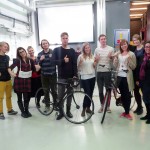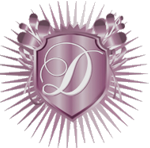 Computer science has had an enormous impact on the forensic science field, ranging from court case information retrieval to Fingerprint, Handwriting, Speaker detection, Lie detection, etc. Among many sub-fields of computer science, artificial intelligence, computer vision, pattern recognition, and robotics have received great attention in Forensic Science. These interests gave a birth to a new emerging interdisciplinary field in Computational Forensics. Professor Sung-Hyuk Cha at Seidenberg has been a faculty member of Computer Science department at Pace University since 2001. His main interests include computer vision, data mining, pattern matching & recognition. Prof Cha was involved in a challenging project, “Handwriting Verification and Identification”, which was granted a U.S. Patent in 2009. He is teaching in both graduate and undergraduate levels in fields of computational mathematics, Data structure, programming languages.
Computer science has had an enormous impact on the forensic science field, ranging from court case information retrieval to Fingerprint, Handwriting, Speaker detection, Lie detection, etc. Among many sub-fields of computer science, artificial intelligence, computer vision, pattern recognition, and robotics have received great attention in Forensic Science. These interests gave a birth to a new emerging interdisciplinary field in Computational Forensics. Professor Sung-Hyuk Cha at Seidenberg has been a faculty member of Computer Science department at Pace University since 2001. His main interests include computer vision, data mining, pattern matching & recognition. Prof Cha was involved in a challenging project, “Handwriting Verification and Identification”, which was granted a U.S. Patent in 2009. He is teaching in both graduate and undergraduate levels in fields of computational mathematics, Data structure, programming languages.
Professor Cha is currently pursuing research in face recognition and identification systems. He is working closely with NYPD and FBI to improve systems in crime scene investigation that capture evidence. This is done with the help of robotics and support from students for NYPD. Pace University has fully equipped facilities for forensic chemistry and biology, including a new state-of-the-art DNA sequencing lab, specialized laboratories for virtual crime scene reconstruction and forensic microscopy.
Forensic science is a rapidly growing discipline and the tools available to forensic researchers are also evolving quickly. The proliferation of crime involving computers has led to a need for specialists trained in the field of computer forensics, the scientific analysis of communications and data on computer storage devices. Specialists in computer forensics unite technical expertise with investigative skills and legal knowledge, a combination, which is essential for computer crime investigations. Students can turn into investigators. The trends in forensic careers are growing in vast fields of investigation. Pace University has fully equipped facilities for forensic chemistry and biology, including a new state-of-the-art DNA sequencing lab and specialized laboratories for virtual crime scene reconstruction and forensic microscopy.
Students interested in computer science fields of forensic science can explore their studies with professor Cha. He is also looking forward for students to work for him both at graduate and undergraduate levels.
Fell free to contact him: http://csis.pace.edu/~scha/index.html






